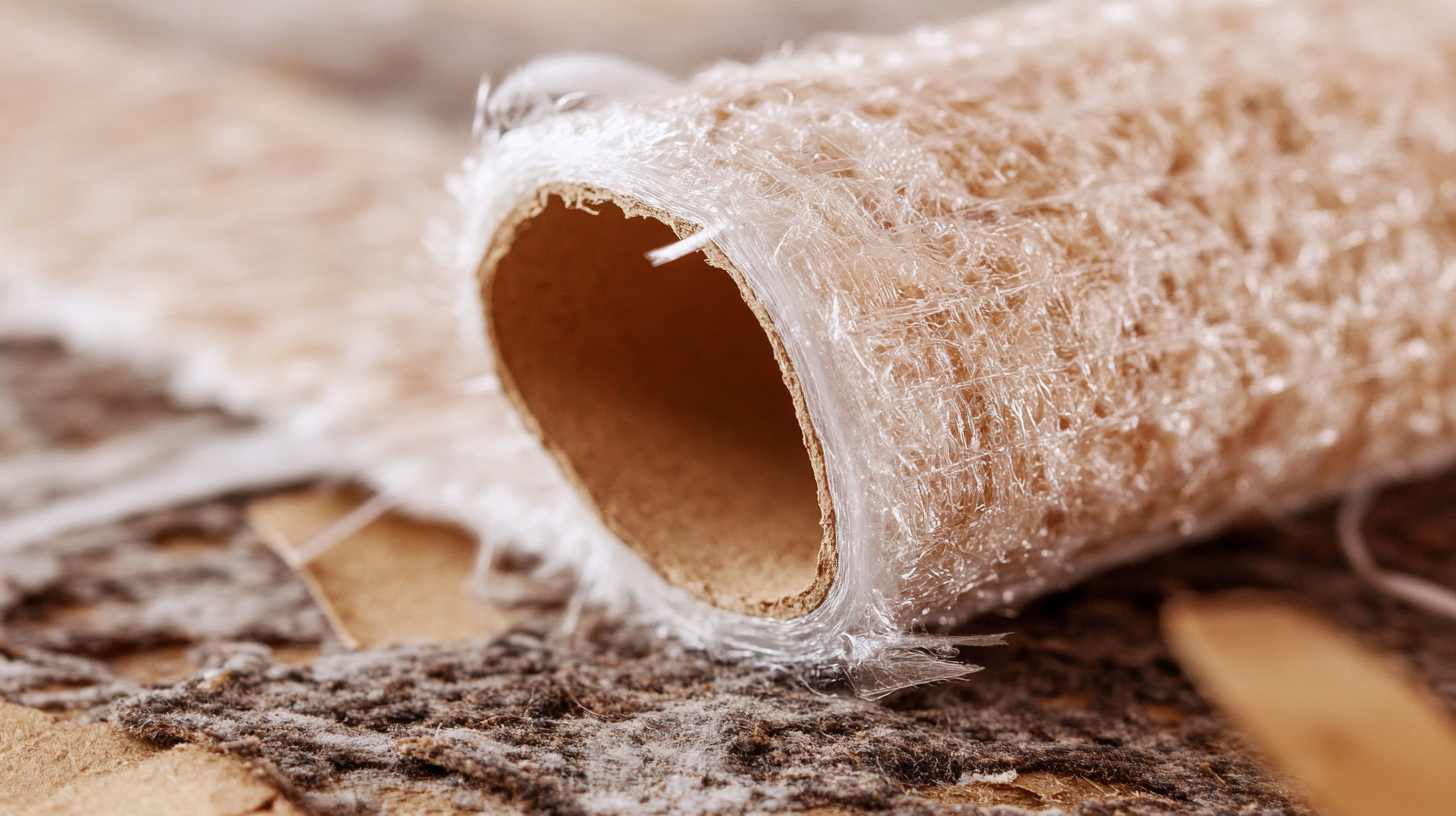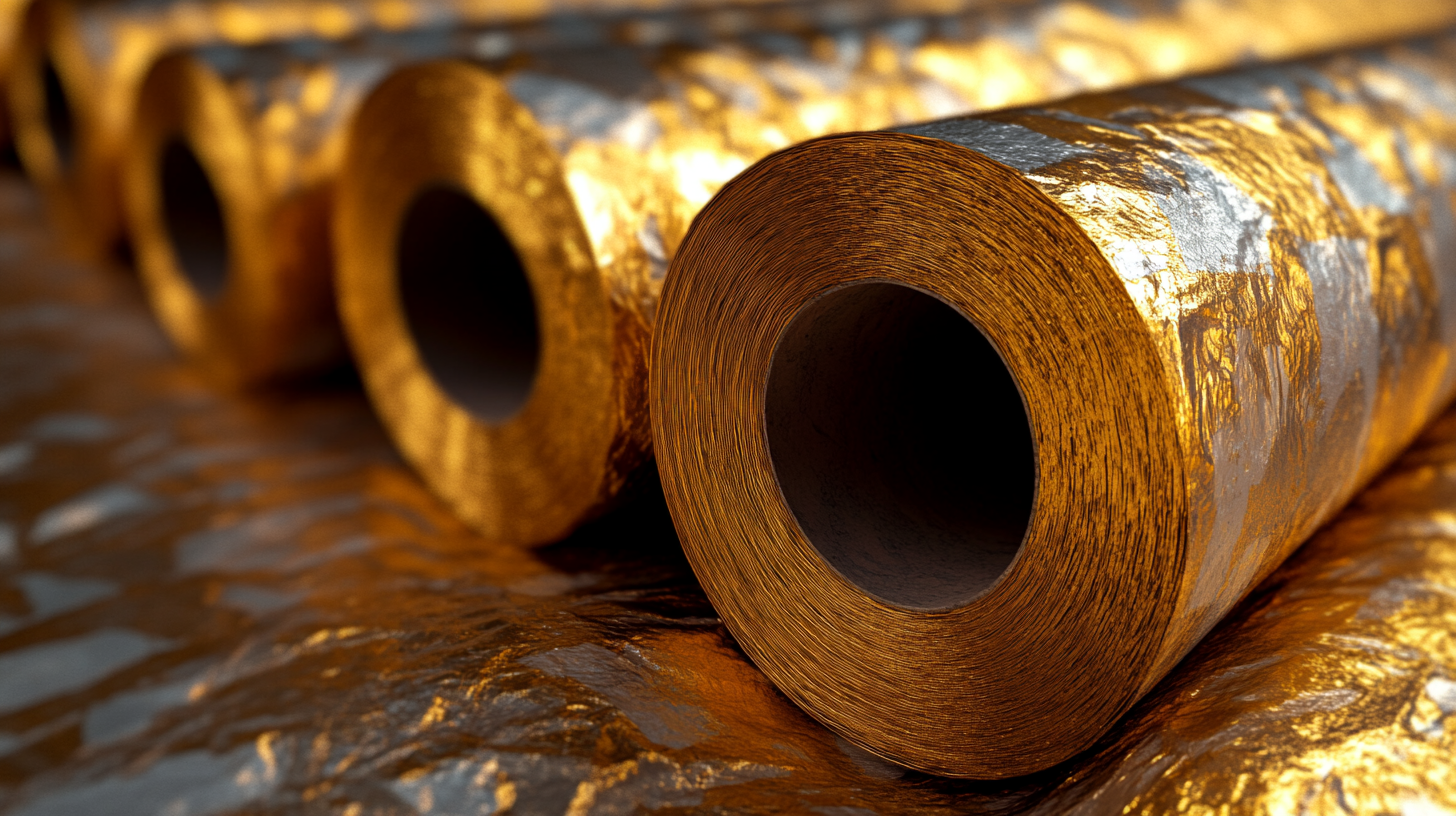QR Code
About Us
Products
Contact Us

Phone

Fax
0086-574-87527773

E-mail

Address
No 432 Zhenhai Middle Road, Luotuo Street, Zhenhai District, Ningbo City, Zhejiang China
In an ever-evolving industrial landscape, understanding the critical components that contribute to efficiency and safety in electrical applications is paramount. Among these, Mica Tape Insulation stands out as a superior choice for safeguarding electrical systems against high temperatures and environmental challenges. This ultimate guide aims to navigate the complexities of selecting the best Mica Tape Insulation for optimal performance, ensuring that your applications operate seamlessly and reliably. By examining key factors such as thermal stability, dielectric strength, and mechanical properties, we will provide you with the tools needed to make informed decisions. Whether you are an engineer, technician, or industry professional, harnessing the right Mica Tape Insulation could be the game-changer that enhances the longevity and performance of your electrical equipment. Join us as we delve into the future of insulation technology, unlocking the potential of Mica Tape for your specific needs.


When selecting mica tape insulation for optimal performance, there are several key factors to consider. Firstly, thermal stability is crucial; mica tape can typically withstand temperatures exceeding 1000°F (537°C). This property is especially important in high-performance applications, such as electric motors and transformers, where overheating can lead to equipment failure. According to a recent industry report by MarketsandMarkets, the mica tape market is projected to grow significantly, driven by the increasing demand for high-quality insulation in electrical applications.
Another critical factor is the dielectric strength of the mica tape. High dielectric strength ensures better insulation and reduces the risk of electrical breakdown. Typically, mica tapes possess a dielectric strength ranging from 20 to 25 kV/mm. This characteristic allows them to effectively insulate windings and components, enhancing overall system reliability.
Tips: When choosing mica tape, always verify the manufacturer's specifications for thermal and dielectric properties to ensure they meet your application needs. Additionally, consider the thickness of the mica tape, as thicker varieties may provide better insulation but can also increase weight and reduce flexibility. Always conduct a thorough assessment based on your specific operating conditions.
When selecting mica tape insulation, the quality of the supplier plays a crucial role in ensuring optimal performance and safety in high-temperature applications. According to a report by MarketsandMarkets, the global market for mica products is expected to reach USD 3.6 billion by 2026, with a compound annual growth rate (CAGR) of 4.2%. This growth underscores the increasing demand for high-performance materials across various industries, including electrical and aerospace where mica insulation is indispensable.
Identifying reliable suppliers involves evaluating several key factors, such as product certifications, manufacturing standards, and customer reviews. The American Electrical Manufacturers Association (AEMA) recommends that suppliers adhere to strict industry standards, including ISO certifications, to guarantee product consistency and quality. Additionally, collaboration with experienced suppliers who can provide technical support and customized solutions can significantly enhance the efficiency of your applications. By prioritizing these criteria, businesses can ensure that they source high-quality mica tape that meets their specific performance needs, ultimately leading to improved operational reliability and reduced downtime.
When selecting mica tape insulation, assessing its performance is crucial to ensure optimal application in high-temperature environments. Start by examining the thermal resistance of the tape; it should withstand continuous exposure to extreme heat without degrading. Look for specifications that indicate the maximum operating temperature and thermal conductivity, as these will greatly affect the longevity and effectiveness of the insulation.
Next, consider the electrical insulation properties. High dielectric strength is essential to prevent electrical failure in demanding conditions. A comprehensive evaluation should involve testing the tape’s ability to resist electrical breakdown while maintaining its insulating properties over time. Additionally, check for resistance to moisture and chemicals, as these factors can significantly impact the performance of mica tape in industrial settings. By following this essential checklist, you can confidently choose a mica tape that meets your performance expectations and enhances your overall system efficiency.
This bar chart presents the evaluation of various performance metrics for mica tape insulation. The metrics include thermal stability, electrical insulation, mechanical strength, chemical resistance, and flexibility, with ratings on a scale from 1 to 10.
When selecting the right mica tape insulation for rod and AM Roebel bar copper conductors, particularly those with rectangular cross-sections, it is crucial to understand the comparative strengths of various types of mica tapes. With the rise of high-power dense electrical machines, these conductors face increasing electrical, mechanical, and thermal stresses. For instance, mica tape made from phlogopite offers excellent thermal stability and resilience, making it suitable for higher temperature ranges, while muscovite mica tape exhibits superior electrical insulation properties, essential for effective performance in demanding applications.
Recent industry reports highlight that the use of mica tape insulation can significantly enhance the longevity of conductors. Using improved mica tape allows for better heat dissipation, which reduces the risk of thermal breakdown in high-load conditions. In particular, studies indicate that conductors insulated with high-grade mica tapes can operate under thermal stress levels up to 220°C, facilitating greater efficiency in electric motors and generators. As such, choosing the optimal mica tape requires a comprehensive analysis of specific operational needs, emphasizing temperature tolerance, electrical performance, and mechanical durability.
| Type of Mica Tape | Temperature Rating (°C) | Thickness (mm) | Dielectric Strength (kV/mm) | Applications |
|---|---|---|---|---|
| Mica Tape A | 900 | 0.25 | 20 | Electric Motors, Generators |
| Mica Tape B | 950 | 0.5 | 30 | Transformer Insulation |
| Mica Tape C | 800 | 0.3 | 25 | Cable Insulation, Electrical Components |
| Mica Tape D | 1000 | 0.75 | 35 | High-Voltage Applications |
When it comes to ensuring the longevity of mica tape insulation, proper maintenance is essential. According to a report from the International Journal of Electrical Engineering, the performance of mica tape can significantly degrade if not cared for correctly, potentially leading to failures in electrical systems. Regular inspections should be carried out to detect signs of wear, such as delamination or discoloration, which can indicate that the tape is losing its insulating properties.

To maximize the life span of your mica tape insulation, it’s crucial to maintain a clean and dry environment. Research by the Electrical Insulation Association suggests that moisture and dust accumulation can adversely affect the integrity of the insulation, leading to reduced thermal and electrical performance. Implementing routine cleaning protocols and ensuring adequate ventilation not only preserves the functionality of mica tape but can also result in substantial cost savings over time by reducing the frequency of replacements and repairs. Taking these proactive measures will ultimately contribute to optimal performance and extend the life of your mica tape insulation.


0086-574-87527773


No 432 Zhenhai Middle Road, Luotuo Street, Zhenhai District, Ningbo City, Zhejiang China
Copyright © 2015-2024 Ningbo Nafty Sealing Materials Co., Ltd. All Rights Reserved.
| | | XML | Privacy Policy |
TradeManager
Skype
VKontakte
